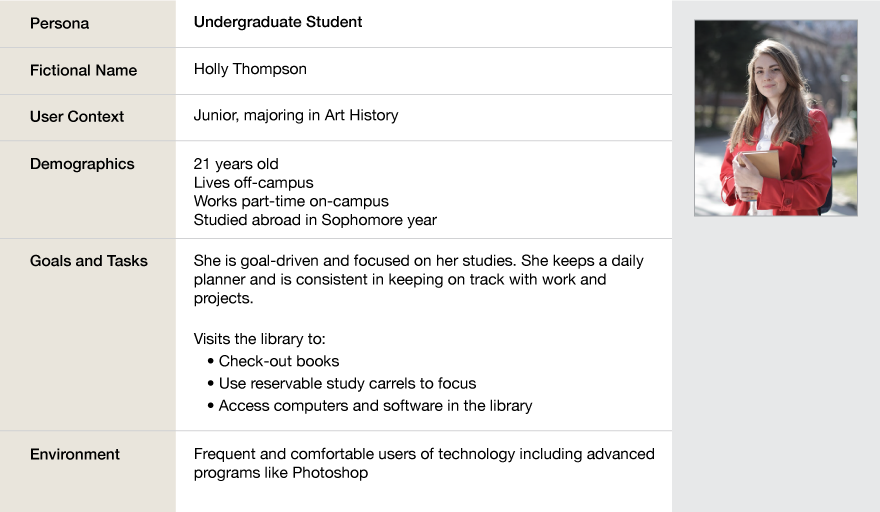UX Research
UX Research is an essential part of a web design and development process. UX research usually occurs before major development work begins and helps inform the design and development stages of a web design and development project. During early stages of a UX design process, especially for a new website, UX research involves talking with users about what they want from a website and imagining ways that a website can fulfill a user’s goals and desires. Further down the road, when wireframes and prototypes are developed, users can give feedback on the flow of the website or it’s structure. Finally, when a website is launched, or when beginning a redesign process with an existing website, UX research can shed light on how users successfully, or unsuccessfully, interact with a working website.

User-centered Research
Focus-groups, Interviews, Surveys
Before having a user interact with a website, it’s often very helpful to sit down with users and discuss what they want to get from a website. Whether it be an e-commerce website, a governmental services website, or a university library website, users access each for specific reasons and have ideas about what they want to find on each. Speaking with users about their wants, desires, and goals is very important.
It’s essential to include all levels of stakeholders in the process. This includes both casual users of a website and managerial level users that have involvement in the oversight of the website. Incorporating different users with different perspectives, goals, and expectations for the website can help to avoid blind-spots that can result by speaking with only a limited number of users and user categories.

The form of speaking with users can take on several different forms including interviews with individual users, focus groups with several users at once, or surveys that users fill out. Such surveys can include open-ended questions that allow users to provide feedback outside of the usually structured survey question.
The result of this process is data. Sometimes quantitative, but often qualitative in nature, this user data can be organized and analyzed. The information that can be produced through user research at this stage in the UX Design process help to inform progressive stages of the process.
UX Research
Personas
After gathering a good amount of qualitative data during the user research process, it’s time to put that information to use. An important piece of information for developing a website is who are the most likely users of the website and what characteristics do they all have in common and what makes groups of users unique? This is where creating personas can be beneficial. Personas are real-world and research-based representations of important users that can be referenced throughout different stages of the usability process.

Having several different personas available helps the usability process by keep focus on the important types of users. This information can be consulted as the usability process continues.
Empathy Mapping
Another early stage of the user research process is to create empathy maps. These are tools to capture a user’s expressions, intentions, actions, and emotions. They can be useful for diving deeper into a user’s experience with a website and highlight pain points or more complex user expectations and goals.

Each quadrant of the empathy map is filled with quotes or actions of the user to describe the process of engagement with a website.
User Scenarios and User Stories
Creating and analyzing user scenarios and user stories adds some real-world context to solving both design and technical challenges for a website. User Scenarios take a user, often defined by a persona, and describes a user and why they might come to a website and what their goals may be. User Stories, on the other hand, are focused on a specific user, with a specific want or desire, so they he or she can achieve a specific goal.
A user story is typically written with the following structure: “As a persona or user, I want to, so I can fulfill a goal”. With a user story, the design and development team can get to work on solving the story and discussing ways that it can be implemented from a design and technical point of view.
“As a student, I want an easy way to contact the library, so I can get my question answered quickly.”
In addressing the user story above, the design team might imagine the creation of a persistent chat widget that would be available on all pages of a website. The development team might think about how they could use CSS and Javascript to implement a feature like this and what functionality it might include.
Affinity Diagrams
A hands-on activity that a UX research team can do is create an affinity diagram. Creating an affinity diagram involves a process similar to brainstorming. Based on all the user research data collected, a team will write down important observations, questions, or issues that came up during the user research process regarding a user’s interaction with a website. Once all the notes have been created, they are grouped together thematically. The idea behind an affinity diagram is to organize the user research outcomes into more manageable headings and then look for connections or insights from the ideas that come together under different headings.

Don’t Skip this Step
For developers and designers, conducting meaningful user research may seem tedious and a way to slow down the process of building a website, but it actually can be the most important part of the entire process. If designers and developers build a website that does nothing to address users wants or needs, a lot of time and effort can easily be wasted. Having solid knowledge of who are the users of a website, why they come to a website, and their desires for what they will accomplish using the website can build the foundation for a successful design and development process.
